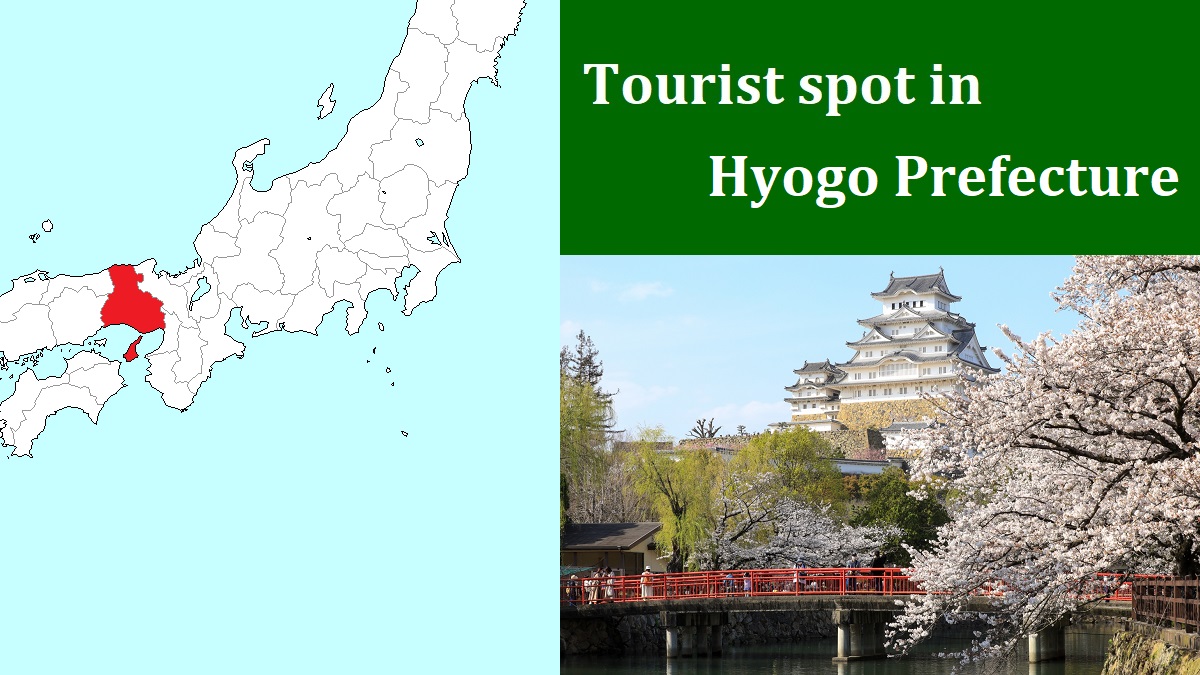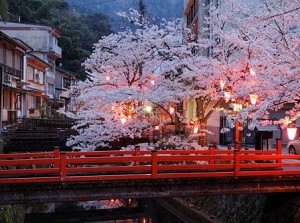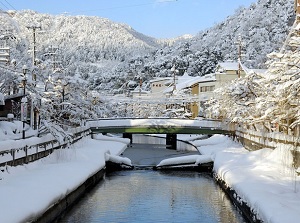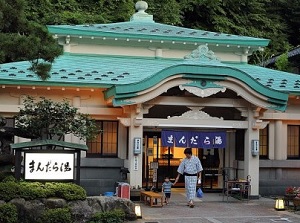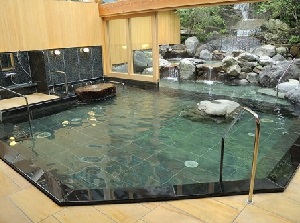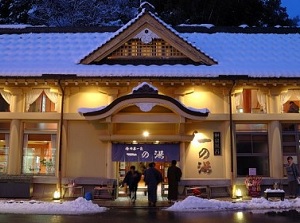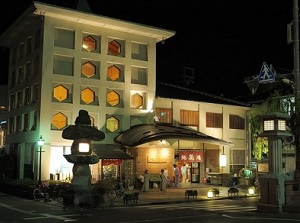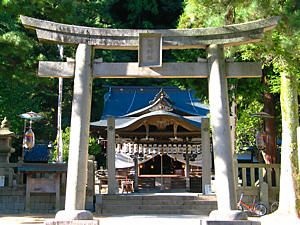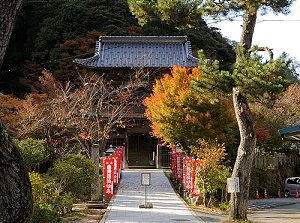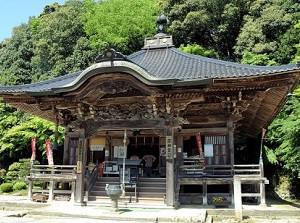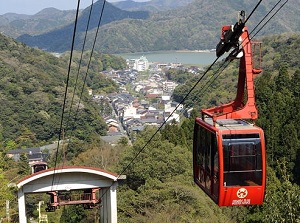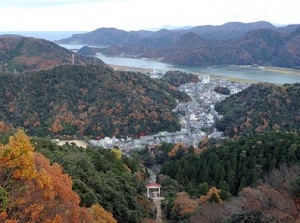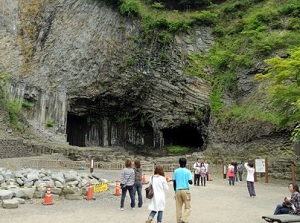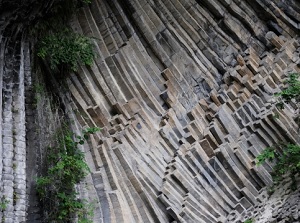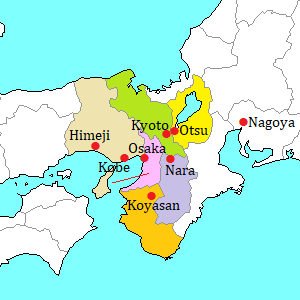Kinosaki Onsen [城崎温泉]
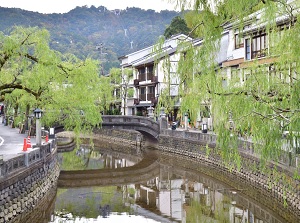
Otani River in Kinosaki Onsen
Photo by HYOGO TOURISM BUREAU
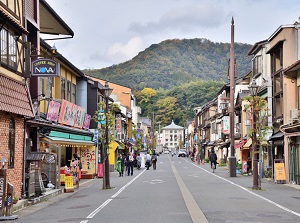
Street in Kinosaki Onsen
Photo by HYOGO TOURISM BUREAU
Kinosaki Onsen is a popular hot spring resort in the north part of Hyogo Prefecture.
It is on the west side of Maruyama River flowing into the Sea of Japan.
The town is located about 4 km south of the Sea of Japan.
Otani River is a small tributary of Maruyama River and flows through the town from west to east.
The area of hot spring resort is along the river.
It is said that a wounded white stork found the hot spring and healed the wound in the spring in the 7th century.
In 717, Buddhist preist Douchi visited this hot spring.
To help people with bad disease, he performed ascetic training here for a thousand days.
Then new hot spring gushed out in 720.
It is current "Mandara-yu" hot spring, and Kinosaki hot spring resort was opened at that time.
In the popular ranking list of hot spring made in the 19th century, Kinosaki Onsen was ranked the second of western Japan, after Arima Onsen resort.
Many hotels and ryokans are on the both side along Otani River.
Many willow trees are planted along the river, and the tasteful scenery is the symbol of Kinosaki.
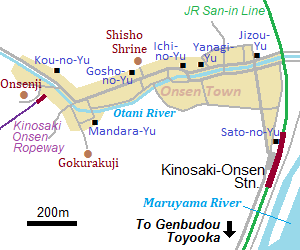
Of course, all hotels and ryokans have some bathrooms.
But even if you stay in such accommodations, you should tour around public bathes in Kinosaki.
Most of the visitors enjoy the tour of bathing.
In the resort town, there are seven public bathhouses.
Each bathhouse has a hisitory or a legend.
Each entrance fee is 700 or 800 yen.
But one-day pass for all bathhouses is 1,300 yen.
The hotel guests in Kinosaki Onsen are free of charge.
Each hotel offers the free ticket to the guests.
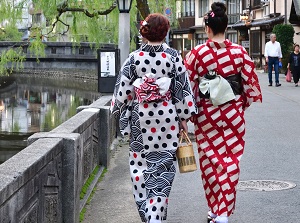
Ladies wearing Yukata in Kinosaki Onsen
Photo by HYOGO TOURISM BUREAU
To walk around the onsen town, it is good to wear "Yukata".
Yukata is a light cotton kimono.
All hotels have Yukata for the guests.
If you don't stay in any hotel, there is a rental shop of Yukata in the center of the town.
Therefore, we can find many visitors wearing Yukata in the town.
Naturally, they wear "Geta" (wooden clog).
When you wear Yukata, it is unmatched to wear shoes.
Seven public bathhouses in Kinosaki are the following.
"Yu" means "hot water", so it also means "bath".
- Kou-no-Yu (鴻の湯) : The oldest bath.
A stork found this hot spring. - Mandara-Yu (まんだら湯) : The bath gushed by high priest Douchi in 720.
- Gosho-no-Yu (御所の湯) : In 1267, the sister of Emperor Go-Horikawa bathed.
- Ichi-no-Yu (一の湯) : The bath in the center of resort town.
A medical doctor in the 18th century said that this water was good for sick person. - Yanagi-Yu (柳湯) : Yanagi means "willow".
It is said that the spring gushed under a willow tree transplanted from China. - Jizou-Yu (地蔵湯) : The traditional bath for the people in Kinosaki.
Jizou Buddha statue is enshrined. - Sato-no-Yu (さとの湯) : The newest bathhouse by JR Kinosaki station opened in 2000.
In the onsen town, there are the following temples and shrine.
Shisho Shrine (四所神社) is a Shinto shrine founded in 708, and is next to Gosho-no-Yu.
When high priest Douchi visited here in 717, it is said that the god gave him an oracle to find Mandara-yu.
Onsenji (温泉寺) is a Buddhist temple founded by priest Douchi in 738.
It is located in the western edge of the town.
The main temple was rebuilt in 1387, and some other buildings were rebuilt in the 18th to 19th centuries.
Gokurakuji (極楽寺) is a Buddhist temple founded around the early 15th centuey, and is near Mandara-Yu.
The main temple was destroyed by fire, and was rebuilt in 1921.
There is a Japanese garden in the precinct.
Kinosaki Onsen Ropeway
The ropeway is operated from near Onsenji to the top of Mount Daishi (231 m).
It takes 7 minutes.
We can see the view of Kinosaki Onsen town, Maruyama River and Sea of Japan on the top of the mountain.
Genbudou (玄武洞)
Genbudou is located about 5 km south of the resort town, and is on the east side of Maruyama River.
It has some caves and cliffs formed with the rocks of columnar jointing.
It was formed about 1.6 million years ago.
There are main five caves and the largest cave is Genbudou.
In 1929, a Japanese geophysicist discovered that the direction of geomagnetic field around Genbudou was in contradiction to the current geomagnetic field.
It means that north and south on the earth were reversed after the cave had been formed.
Therefore, these caves are academically precious.
Around the entrance to the caves, there is Genbudo Museum.
How to get here
By limited express of JR, about 2 hours and 20 minutes from Kyoto, about 2 hours and 50 minutes from Osaka.
Or, from Tajima Airport, about 40 minutes by route bus.
To Genbudou, by route bus, about 20 minutes from JR Kinosaki-onsen station.
Or, because the distance is about 5 km from Kinosaki Onsen, a rental bicycle is available.

